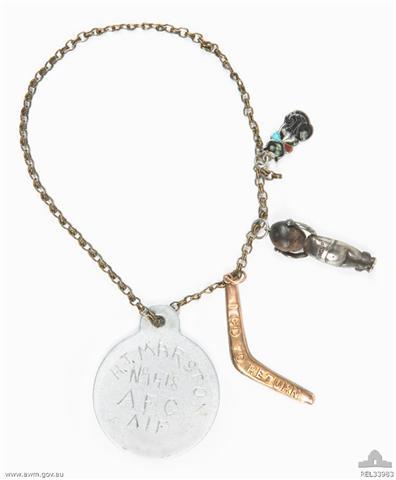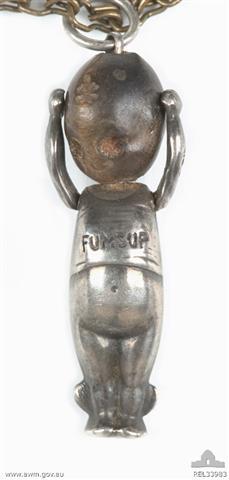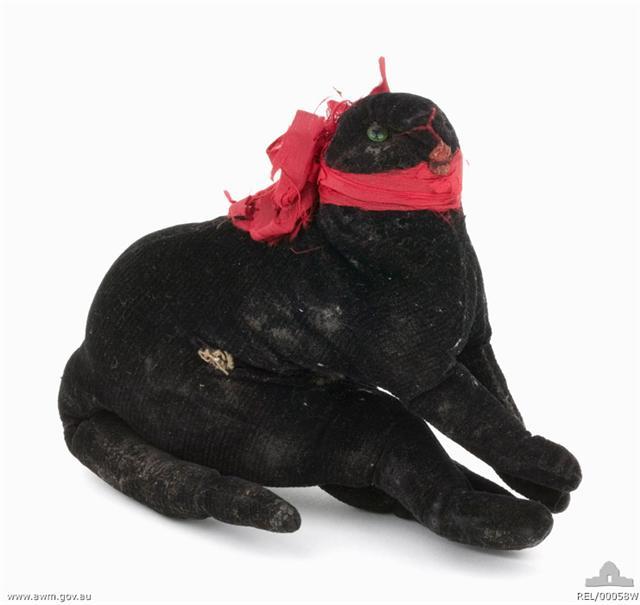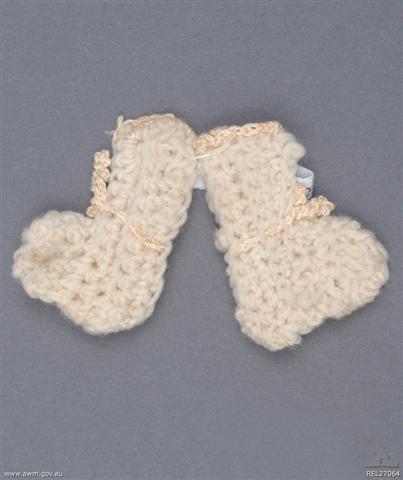Lucky Charms
It is not unusual for servicemen and women to carry with them good luck charms while on overseas service. However one particularly superstitious serviceman was Aircraft Mechanic 2nd Class Henry James Marston, of No. 3 Squadron, Australian Flying Corps (AFC). Marston wore a wrist chain with an identity tag and three lucky charms – a boomerang, a black cat and a doll.

The boomerang entitled 'I Go To Return' is an obvious choice, and may have been bought by or given to Marston before leaving Australia. The choice of the “lucky” black cat is similarly obvious. The silver FUMSUP charm (a play on “thumb’s up”), was a popular motif in Britain during the First World War and also appeared on souvenir china and postcards. The head appears to be made of wood "touch wood" and has a four leaf clover impressed into it. The tiny glass eyes often seen in other examples are missing. Marston’s mother’s details and address are engraved on the reverse of the identity disc.

These lucky charms proved their worth as Marston narrowly escaped a serious accident one day in 1918. He was standing near the landing strip on No. 3 Squadron's aerodrome, when an Armstrong-Whitworth F.K.8 started to make its descent. Unfortunately the aircraft’s landing gear broke off before it could touch down. The resulting crash ignited the bombs on board in a bright red flash followed by a huge explosion. Finding himself unscathed Marston immediately went to the aid of the aircraft’s observer who had been blown out of the cockpit by the blast.
Marston remained with No. 3 Squadron until the end of the war. He returned to Australia in May 1919 aboard the transport ship Kaiser-i-Hind and was discharged on 16 July.
The wrist chain will be on display in the Memorial’s new permanent exhibition Over the Front: the Great War in the Air, opening in November 2008. It will be one of a number of good luck items displayed in this exhibition, which will also include a small black toy cat belonging to Captain P G ‘Gordon’ Taylor, RFC and a pair of miniature crocheted woollen booties carried by Captain Herbert G Watson, No. 4 Squadron AFC.

